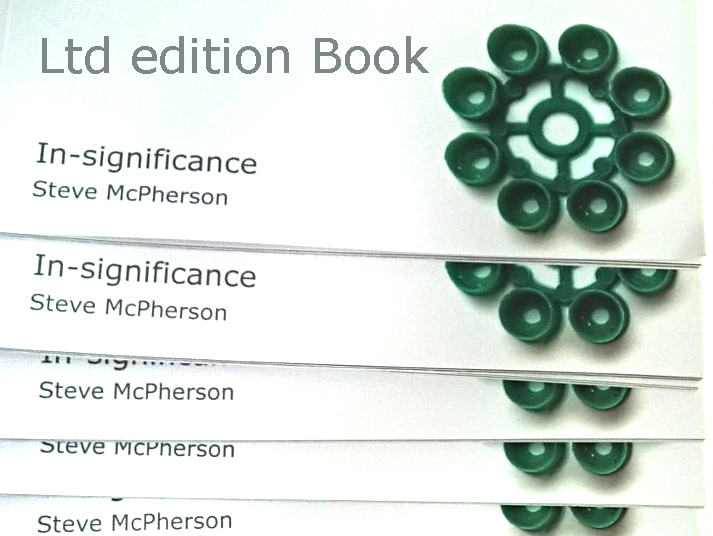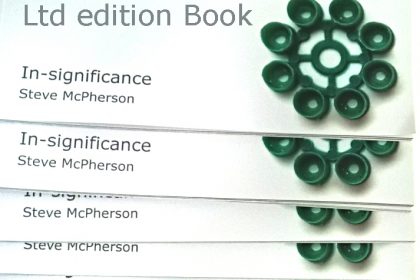

While creating work, and organising my summer show ‘In-singnificance in Margate this year, I aimed to make a small book to accompany the exhibition. The digitally printed, full colour, perfect bound publication is limited up to 500, and all are numbered and signed. Above you will find a few images from the book and below a sample of the text.
The oceans provide – we plunder.
Our constant consumption of the planets resources reveal a human need for novelty and change, for more power, more food, more possessions.
The container ships that slowly slice the horizon and stall on my local coast are a persistent reminder of the desires that drive us. These droning hulks glide on perpetual journeys to feed the needs and whims of a society that seeks to identify itself through that which it consumes. But is it amongst these objects that we lose our individuality? We are drowning – our homes, our lives are saturated by them, we clothe ourselves, become ourselves through them and with them. In doing so we force significance and meaning on to each item; the toy given as a gift, the gadget bought as a self reward, acts of love, friendship, of necessity. Each object finds a place, has a time, has a name, can be identified and filed in memory, with similar, with difference and association.
Whilst doing so we rank in importance, usefulness, meaningfulness, favourites, things to be kept, this to discard. We consciously and unconsciously sort, creating collections and locations for these objects that we gift a narrative to.
The plastic objects and remnants that sit on the tide line of my coast all have their own narrative. They own unknowable stories of their own material origins; of their manufacture, their creators and previous owners, their journeys from and to delivery destinations, to the stores and shops who placed them into the hands of purchasers. These are all kept as secrets. Furthermore the story of how they arrived from the sea and on the beach are lost and only can be considered in the imagination of those who find, and subsequently those who view and decided to question.
Plastic itself does not bio-degrade, still in its material infancy (approx 75 years), it has a long and yet unaccounted legacy. The plastic objects left in landfills or in the world’s oceans own physical and chemical legacy is only now being predicted and established; and the evidence of its impact on our ecology is growing globally by the week , and provides alarming reading. The numbers of plastic particles in transit in the world’s oceans are staggeringly large estimated at a minimum of over five trillion individual items*. In my small corner of the UK thousands of these pieces colourfully confetti the sands and mingle with the weed on the beaches, leaving their silent impact.
This abundant material imbued with enigmatic stories and drenched in social, ecological and projected significance and meaning are saved from the mouths of birds and marine wild life, and halted on route to buried earth. The few that move through my hands are reclaimed in artworks that are a legacy of my own. Plastic will outlive us all, and while each piece I find becomes part of my own history. Observers of my work may locate, identify and add their own stories to the objects I present. Bringing each abandoned piece in to new significance.
Steve McPherson 2015.







